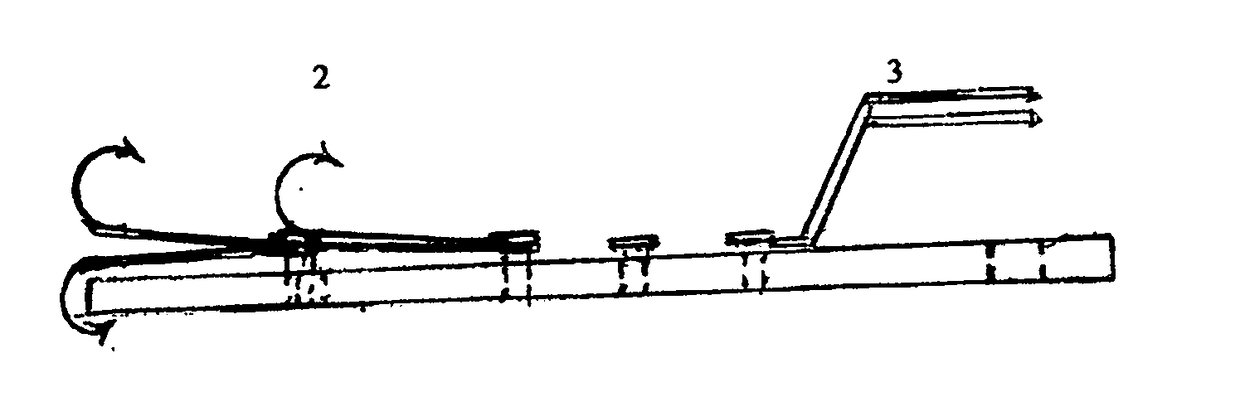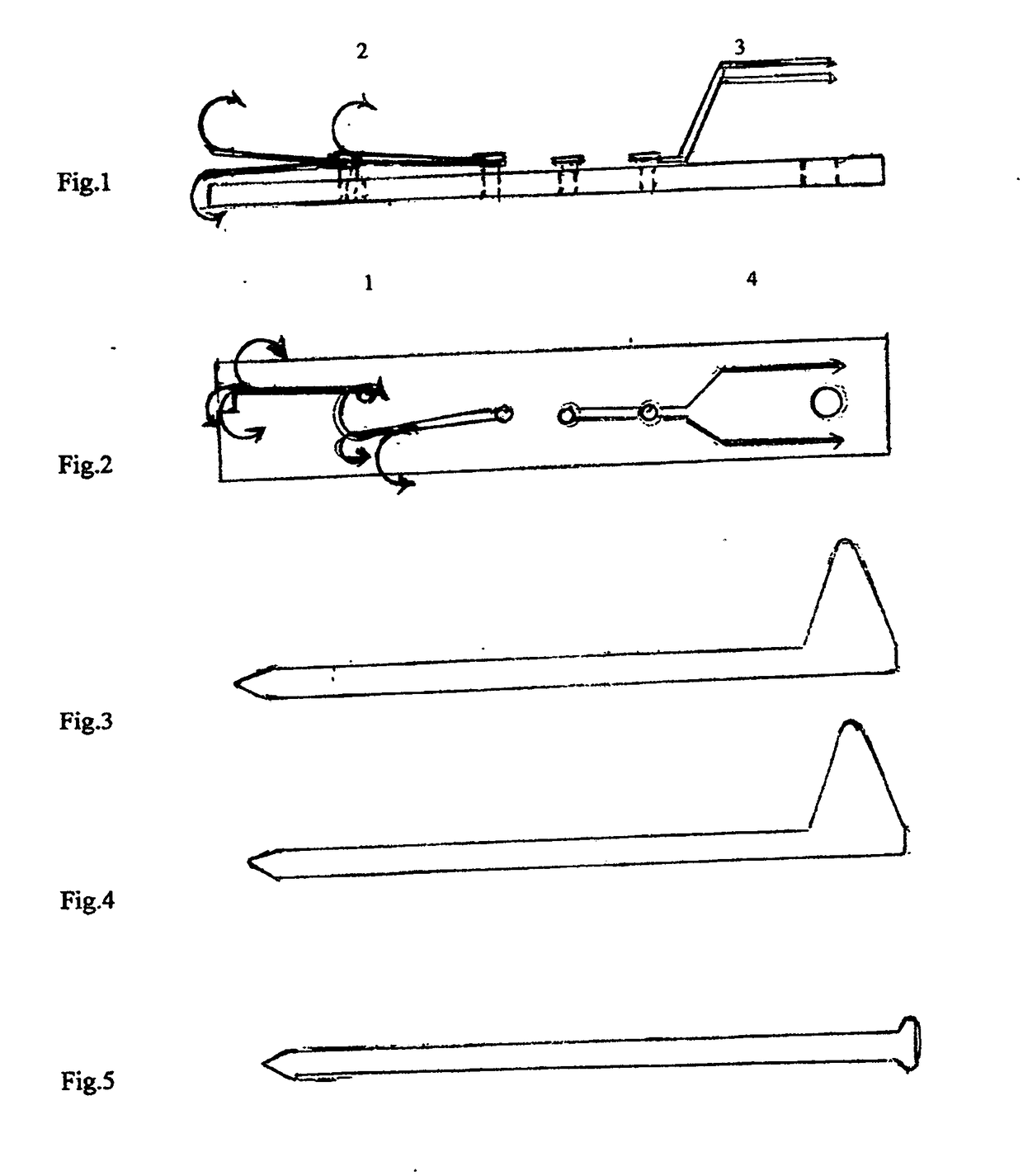Out Only Rodent Blocker
a technology of rodent blocker and rodent blocker, which is applied in the field of out only rodent blocker, can solve the problems of only a 25% chance of successfully removing live or dead rodents from the device, device useless, and device failure to work, and achieves the effect of simple operation
- Summary
- Abstract
- Description
- Claims
- Application Information
AI Technical Summary
Benefits of technology
Problems solved by technology
Method used
Image
Examples
Embodiment Construction
[0015]The invention includes a platform 1 with two treble hooks (or prongs) 2, a wire bracket (or prongs) 3, mounted on a board with two screws and a drilled hole for a spike (metal, plastic or composite) 4. This portion of the invention will be placed in a rodent's hole that has been determined to be currently in daily use by rodents to venture out of their hole to obtain food and water. Prior to placing the platform into the larger primary hole the homeowner will place their finger into the hole to determine which direction the secondary hole to the nest has been formed by the rodent. The secondary hole is smaller than the primary hole and the platform must be horizontally placed on the floor within this hole.
[0016]Next, the spike FIG. 5 must be placed in the platform and firmly into the soil at the rodent's opening to secure the platform and a white flag FIG. 1 placed in the soil to secure the location of the platform after the soil has been placed over the platform. After a 24 / 4...
PUM
 Login to View More
Login to View More Abstract
Description
Claims
Application Information
 Login to View More
Login to View More - R&D
- Intellectual Property
- Life Sciences
- Materials
- Tech Scout
- Unparalleled Data Quality
- Higher Quality Content
- 60% Fewer Hallucinations
Browse by: Latest US Patents, China's latest patents, Technical Efficacy Thesaurus, Application Domain, Technology Topic, Popular Technical Reports.
© 2025 PatSnap. All rights reserved.Legal|Privacy policy|Modern Slavery Act Transparency Statement|Sitemap|About US| Contact US: help@patsnap.com


